How to Deal with Bears in the Backcountry
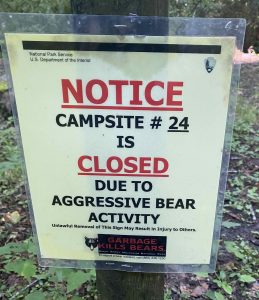
“Do you ever see any bears when you fish?” It’s one of the most common questions I get. Probably the only question I get more often is, “Is that your real last name?” “Yes” to both. If you spend enough time in the Smokies, especially in the backcountry, you’re going to eventually run into a bear. In fact, Great Smoky Mountains National Park is thought to have the densest population of black bears east of the Mississippi.
Likelihood of Seeing a Bear
Other than pure chance, the number of bears you’re likely to see depends on how much time you spend in the mountains and how abundant food is. When bears have plenty to eat, they don’t roam around as much. However, when food is in short supply, such as following a drought, bears need to do more looking and that tends to take them closer to trails and roads. I typically spend about 200 days a year in the mountains and I see anywhere from 3 to 40 bears in a year.
On a recent backcountry guide trip, we saw 4 bears in one day! Seeing a bear when you’re fishing or hiking is usually a good thing. They’re pretty and they’re really cool to watch. The key to enjoying bears is knowing how to behave around them.
Concern for Bears
Many people tend to be far too afraid of bears, allowing that anxiety to disrupt what should be a peaceful day in the mountains. Or worse, their fear incites panic when they encounter a bear and they make poor choices. However, on the other end of the spectrum, you have people who do not give black bears the respect they deserve. I routinely see tourists getting far too close to bears when trying to photograph them. And I’ve had more than a few “macho” guide clients chuckle when they learn that I carry bear spray in the backcountry – “They’re just black bears.”
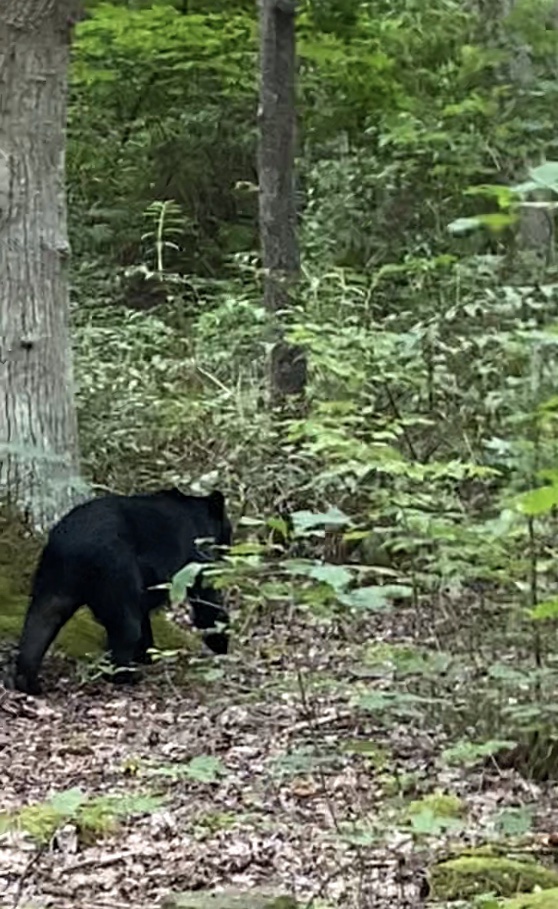
It’s true that black bears don’t get as big as brown bears and grizzlies, but they can still get as big as 600 pounds. It’s also true that black bears are rarely aggressive toward humans. On the list of top causes of injuries in the Smokies every year, bear attacks don’t even rank, which means that, on average, there are less than four a year. As a matter of fact, in the entire history of Great Smoky Mountains National Park, there have only been two bear attacks that resulted in human death. One of those was just last year on Hazel Creek.
So, I don’t carry bear spray out of an abundance of fear but more as a precaution in case I run into one of those few bears who don’t know the rules. For one thing, I’m in the backcountry far more than, well, the average bear, so I have far more opportunities for an encounter. Additionally, I am responsible for the safety of paying clients and I don’t take that lightly.
In any case, whether or not you decide to carry bear spray is up to you. But I have learned over the years from talking to guide clients and passing hikers and fishermen that most people don’t have any idea what to do when they encounter a bear. Hopefully this article will help a little.
Black Bear Facts and Statistics

As I typed that header, I couldn’t help thinking about Dwight Schrute. Fans of The Office will understand. Before we get into managing a bear encounter, let’s get a little information on black bears, at least when it comes to the Smoky Mountains.
- There are an estimated 1500 – 2000 bears in the Smoky Mountains. This works out to roughly four bears per square mile and is thought to be the densest population of black bears east of the Mississippi River.
- Black bears are omnivores and they are scavengers. They feed mostly on plants, nuts and berries. Black bears also feed regularly on insects (grubs, larvae, etc.) and crustaceans (like crayfish), and they eat meat but rarely kill for it. In other words, they are unlikely to kill a deer for meat but will feed on a deer carcass if they come across it, much like a buzzard.
- Some black bears turn to scavenging in towns for food, raiding dumpsters and trash cans. This behavior should never be encouraged as it increasing endangers the bear and the humans around the town.
- While they may appear to be slow and clumsy, black bears are quite agile and can reach speeds of 35mph. They are also exceptionally good climbers.
- Black bears in the Smokies are usually most active during the early morning and late evening and they typically mate sometime in July.
- Black bears do not truly hibernate in the Smokies but in winter, do enter long periods of sleep. They may leave the den for short periods if disturbed or during brief warming spells.
- Their cubs are born during this period of deep sleep, usually in late January or early February.
- Females with newborn cubs usually emerge from the den in late March or early April. The cubs, which are usually born in pairs, will typically stay with the mother about a year and a half.
Video of Bear Scavenging on Stream Bank
Preparation for Travel in Bear Country
Preparing for travel in bear country mostly means packing to prevent a bad encounter but also to deal with a bad encounter should one arise. Of course, by bad encounter we’re talking about the rare occurrence when a bear behaves aggressively toward you. Any bear will behave aggressively if it feels that it or its cubs are being threatened, and understandably so. If you were at the supermarket and a stranger approached your kid in an unusual manner, you’d do the same! “Problem bears” may behave aggressively if they view you as a source of food. This behavior is rare but may occur from a bear that has been fed by people at some point or that is simply a victim of starvation.
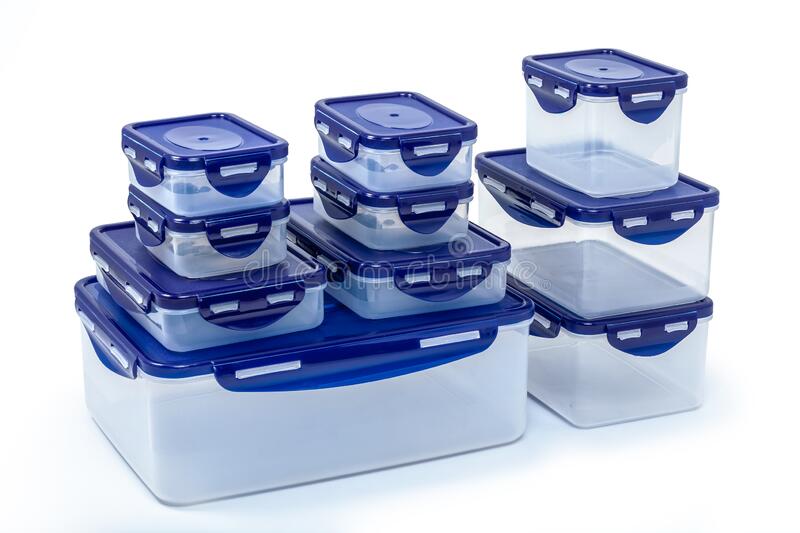
You can significantly reduce the chances of an encounter with the latter by packing your food properly. Always have any food (including trash after you eat) you’re carrying sealed in an airtight container. Ziplock bags, for example, will do the trick or better yet, cut down on those single use plastics and carry your food in a reusable container. If you’ve ever been on a full day guided trip with me, you may recall your lunch was packed in a sealed container.
Another suggestion many experts make to prevent a surprise encounter is to put bells on your pack when you’re hiking. The idea is that you won’t accidentally startle a bear that might be upwind of you because it will hear you coming. This approach absolutely has merit but it is not one that I personally choose to take. When I visit the backcountry, I enjoy taking in ALL of nature, including the sounds. I want to hear the wind in the trees, the sound of the stream, chirping birds, etc. and not the sound of bells. Furthermore, I don’t want to scare off wildlife.
To prepare for a bad encounter, carry bear spray and a whistle. The whistle can be used to scare off an aggressive bear and also as a signaling device if you get into any other kind of trouble. Keep the bear spray in a place where it is immediately accessible. You likely won’t need it but if you do, you’re not going to have time to rummage through your pack.
Dealing with an Encounter
When you encounter a bear, stop what you’re doing and observe. Many people have heard that you should look big and make a lot of noise when you see a black bear. There is a time and place for that but it’s not every time you see a bear. If it’s far away and minding its business, you don’t want to start harassing it by yelling and waving your arms!
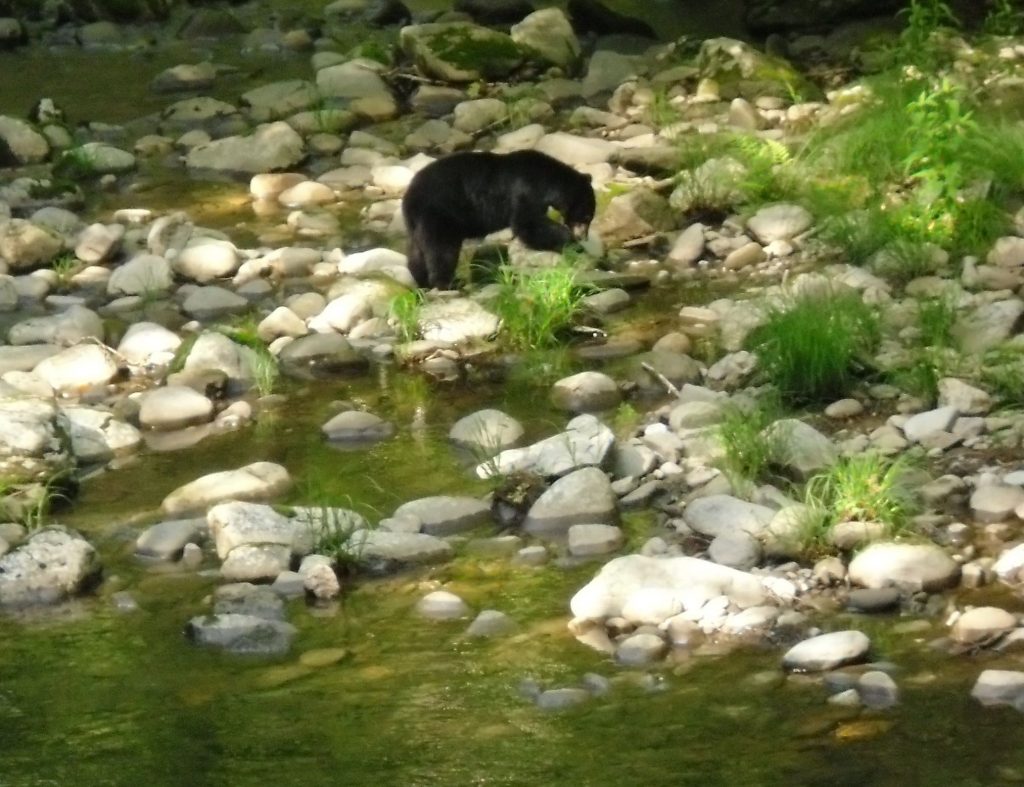
You want to watch and see what it’s doing. Look around to make sure there are no cubs and if there are, that you don’t put yourself between the adult and cubs. More often than not, your course of action will be to do nothing. As long as you’re at a respectable distance, the bear will likely ignore you and go about his business. Bears are cool and fun to watch. Enjoy the show and after it moves on, go back to what you were doing.
Just always be sure to give the bear plenty of space and make sure it has a clear path. You don’t want it to feel cornered. If you encounter one a little too closely, keep watching it and slowly back away. As long as its behavior doesn’t change, it doesn’t feel threatened and you don’t need to worry.
I frequently see bears walking stream banks and turning over rocks for food. If you see this when you’re fishing and the bear is heading your direction, quit what you’re doing, get out of the stream and go to the opposite bank of the bear. Typically, it will totally ignore you and go right by you. In any situation, try not to turn your back on the bear and never run. Running can often trigger a predatory response in a bear that was otherwise minding his own business.
When Bear Encounters Go Bad
If a bear changes its behavior around you, it’s time to get serious. While it may be difficult, try to remain calm and pay attention to what the bear is doing. If it is doing things like swatting the ground or making a quick step and stop (bluff charging) toward you, it is demanding space. If you have bear spray, now is the time to get it out as you slowly back away from the bear. Keep backing away until the bear quits this behavior. As mentioned above, do not run. Black bears can run 35mph! And don’t try to throw food at it. You don’t want the bear to view you as a food source.
If a black bear continues toward you, even after you attempt to give it space, it’s time to stand your ground. Now is the time to look bigger by stretching your arms out. If you’re with someone else, stand together with your arms out. Act big and make a lot of noise. You’re trying to scare the bear at this point. Blow your whistle, bang rocks together, etc.
If, after all of this, the bear is still approaching in an aggressive manner, it’s time to fight. You don’t want to play dead as is often suggested with other types of bears. Blast it with your bear spray. If you don’t have bear spray, use whatever is nearby. For example, in a stream, you are surrounded by rocks that you can throw at it. Or use a stick. Use whatever you can. Just fight.
About Bear Spray
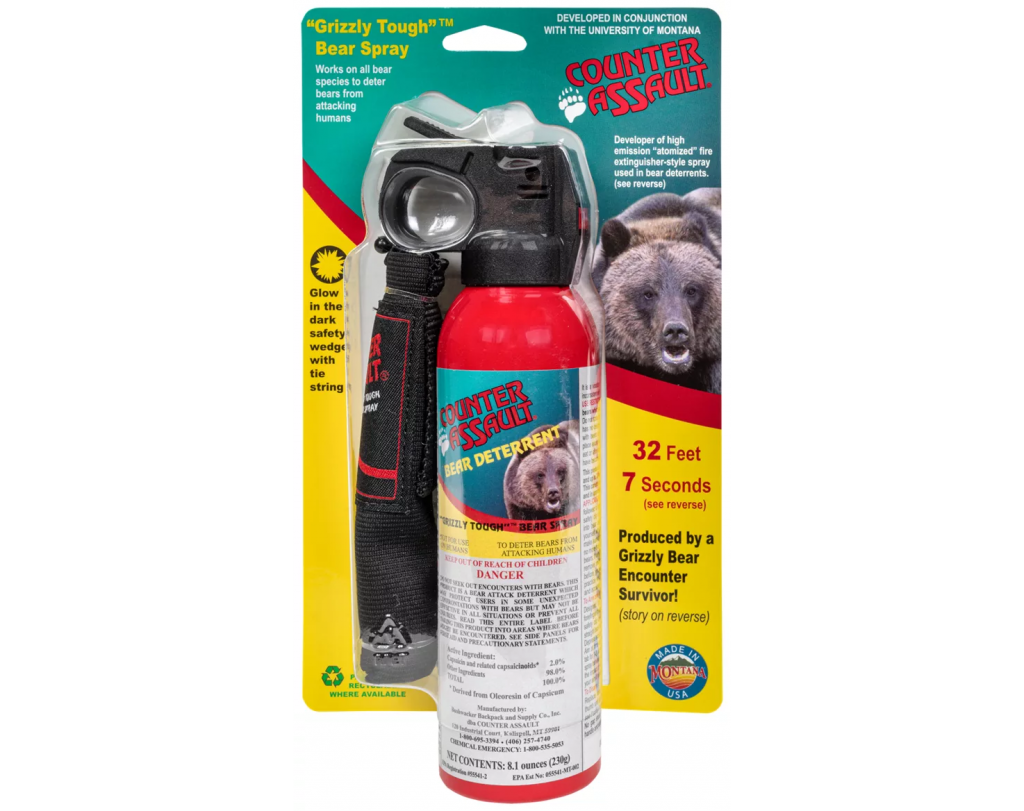
Bear spray is essentially high intensity pepper spray that is compressed in a container resembling a small fire extinguisher. It usually comes with a holster that you can easily attach to your belt or pack. Unlike personal defense pepper spray you might carry on a keychain to spray into the face of an attacking human at close range, bear spray containers fire a cloud of chemical about 30 feet.
While I have test fired bear spray, I’ve fortunately never had to use it for actual defense. If you do have to use it against a bear, it’s recommended that you give a few short blasts rather than emptying the container. If the bear continues approaching after those few short blasts, unload it. Needless to say, after you have stopped the bear, get the hell out of there, go home and pour yourself a stiff drink!


Hi Rob…It’s Jack from St. Louis. I recognized the bear video you have in the Sept newsletter! You were guiding my son and me that day…we were just finishing up when the bear dropped into the stream looking for bugs.
That was a cool bear sighting! It’s rare for me to remember to shoot video!